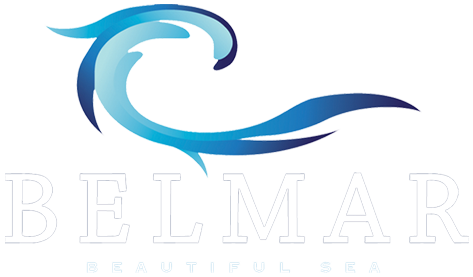FAQ & Other Info
What can I do when a neighbor’s tree branches extend over my property?
You should consult with your neighbor before taking any action because trimming a tree improperly can cause damage to the tree. If you are unable to work with your neighbor for a resolution, and the tree poses a danger to your property, you should consult with an Attorney and/or your Insurance Company. If damage has already occurred to your property or the neighbor’s tree, a consultation with your Insurance Company or an Attorney may be required. The Shade Tree Commission does not have jurisdiction over disputes relating to trees found on private property.
Who trims the branches from the street trees?
The homeowner is responsible for the required tree pruning where the tree originates on private property or is in the planting strip between a sidewalk and curb.
What if tree roots are pushing up my sidewalk at my address? Who is responsible for trees blocking traffic signs, streetlights?
Report the problem to Belmar Shade Tree Commission or Department Public Works. Sidewalks, Planting Strip Trees and their associated Roots are the homeowner’s responsibility.
Can One attach nails, signs, hooks etc. to trees on Belmar Public Property, or a street tree?
No, it is unlawful to attach anything to a street tree or tree on public property.
Who takes care of fallen or broken hanging branches?
The property owner is responsible for any branches or debris that may fall from their trees.
Can I remove trees on my own property?
Homeowners can cut down trees on their property. However, there may be limitations from clearing in restricted areas that may be present on a portion of their property such as wetlands, easements, steep slopes, etc. You may be required to apply for a permit. We recommend the homeowner contact the Belmar Shade Tree Commission for further clarification.
Who prunes tree branches in wires?
The local utility company, JCP&L (Jersey Central Power & Light, a.k.a. First Energy), is responsible for removing branches near or in the electric wires. DO NOT ATTEMPT TO TRIM TREES NEAR ELECTRIC WIRES. Notify JCP&L 800-662-3115 of any electric wire concerns.
Who removes the dead tree in front of my house?
The homeowner is responsible for the removal of trees located on private property. For removal of a tree within the Township Right of Way, please contact Belmar Shade Tree Commission or Belmar Code Enforcement.
What or where is the Township Right of Way (ROW)?
There is no single easy answer. Each property location can have specific differences that do not apply to the next location. Individual home survey plans associated with the tax maps should lead to a better understanding of the specific property line location and/or to the township right of way location. Licensed Surveying produces exact positions.
How do I tell if my tree is alive?
A close inspection of tree branch tissue and the leaf buds. Environmentally stressed trees may cause the leaves to take longer to emerge than the surrounding tree’s leaves. Contact a Certified Tree Expert (CTE) for their professional services. The listing of NJ Certified Tree Experts can be viewed at the following website http://www.treeexpertsociety.org/
What is the mulch ring around the base of my tree and can I use my string trimmer to cut the grass and weeds here?
Tree mulch rings installed and maintained to current arboricultural standards are simple and wonderfully beneficial to plant and tree health. Mulch beds allow for very easy weed management. Mulch beds do not eliminate weeds but allow excellent soil conditions for tree vigor and for very easy weed management. All types of mechanical damage to tree trunk tissue (string trimmers/lawn mower decks, knife carving, etc.) cause the tree stress and should be avoided. A lawn area is a harsh condition for tree roots to compete for available water and nutrients. Creating generous plant beds (ie: off the tree trunk collar and a maximum 2”-4” of mulch thickness) avoid mechanical damage to the tree trunk.
Can I plant my home landscaping anywhere on my property?
Plantings should be located off the property lines, off any easements (site triangle, utility, drainage, etc.) and plants should not be installed in the right of way (ROW), on township properties or in traffic site views. Allow sufficient space for plants to grow to maturity. Prior to planting, please call the following service (New Jersey One Call) Call Before You Dig 1-800-272-1000 and request a utility mark out to avoid any damage to existing utilities.
What types of trees do you plant and why?
Belmar Preferred/Approved Street Tree planting list is posted on this web site.
Do I need to water trees?
Yes- most newly installed plants require above average watering. Typically, additional watering for a newly planted tree is recommended, especially during the first two years. The current understanding of balled and bur lapped trees is: 90% +- of the tree system was left at the nursery where the tree was dug. The installed tree has 10% +- root surface to absorb water. While too much water can rot trees, a thoughtful balance of extra water is typically needed for planted trees, especially for the first two (2) years.
Why does the power company have to make such a large hole through my street tree?
To maintain your and the neighborhood electric supply. This continuing situation is where trees with the greatest potential for growth space have been planted right under the overhead utility wire. The trees survival mechanism continues to grow branches into the best light source- which is right where the overhead wires are! We have not discovered a usable solution for this continuing problem. You Cannot plant trees with large potential growth space under the overhead wires. Please refer to Belmar Preferred Tree List. If you have any concerns contact Belmar Shade Tree Commission before you purchase a tree to plant under overhead wires.
What does it mean to be a “Tree City USA?”
The municipality must maintain four separate standards or criteria:
- Shade Tree Commission
- A Community tree Ordinance
- A Tree Program, Minimum $2 Per Capita
- Arbor Day Observation & Proclamation
How do I tell what kind of tree I have?
The Short answer is experience. And you can visit www.arborday.org for helpful tree identification links.
What do I do about Hornet’s nests and Bees?
Please do not agitate or disturb the nests. Hornets are especially aggressive. Keep the kids from throwing stones and such at the nest- hornet stings hurt and may lead to breathing problems if the person has an allergic reaction (anaphylactic shock). Getting stung by agitating the nest is not the best way to find this out. If the tree originates on private property, it is the responsibility of the homeowner. Call a certified pesticide applicator company.
Does my tree have a disease?
Natural tree back characteristics (London Plane) can look like a disease to many people. Excessive leaf fall or too little leaf emergence in the springtime could be a disease. Accurate diagnosis, pest or cultural problems in trees, take experience. Please call your local Certified Tree Expert (CTE). The listing of NJ Certified Tree Experts can be viewed at the following website: http://www.treeexpertsociety.org/
Why is my tree dead?
First check for mechanical damage to the trunk, and call your local Certified Tree Expert (CTE). The listing of NJ Certified Tree Experts can be viewed at the following websitehttp://www.treeexpertsociety.org/
Invasive species: Plants that should not be planted.
There are certain species of trees and plants that should not be planted. Invasive species are those that are introduced to an area outside their natural range where they eventually have detrimental effects on natural and agricultural systems. You should not plant invasive species on your property because they can cause harm and damage to other trees that are in close proximity or grow so out of control that they are encroaching onto your neighbor’s properties. One example of an invasive and nuisance species is Bamboo. Bamboo grows rapidly and strangles the surrounding root systems of other trees, thus killing the trees. Refer to www.arborday.com and other websites for a listing of other invasive species.
Can I remove a tree on my property if it is located in a Conservation Easements, Wetland, or Steep Slope?
Your property may have protected or restricted areas such as conservation easements, wetlands, wetland buffers or steep slopes where tree and brush removal are prohibited. Conservation easements are deed restricted. Wetlands and wetland buffers are regulated by the NJ Department of Environmental Protection. No tree or brush should be cleared in these areas without the appropriate Township or State approval. If you have a dead or hazardous tree in one of these protected areas, contact Belmar Shade Tree Commission or Belmar Code Enforcement to notify them prior to removal. No stumps are to be grounded or removed in these protected areas. To find out if a tree is hazardous, contact a Certified Tree Expert (CTE). The listing of NJ Certified Tree Experts can be viewed at the following website: http://www.treeexpertsociety.org/
What trees or plants are toxic to my animals?
For a listing of plants that are toxic to horses, dogs or cats, visit the following website: http://www.aspca.org/pet-care/poison-control/plants
What is a Hazardous Stump? A Hazardous Stumpmeans an uprooted tree stump, or remnant thereof where the stump itself extends above the existing grade or the stump has been removed and/or has not been backfilled properly. Both situations pose an immediate risk, threat to life, public health, and safety to people and property. Backfilled Properly means: the backfill must be level to the existing grade, and the backfill must be compacted firmly.
What is a Hazardous Tree? A Hazardous Treemeans a tree with structural defects likely to cause failure of all or part of the tree, which could strike a "target.", people, a vehicle, a building, or a place, which pose an immediate risk, threat to life, public health, and safety, to people or property.




